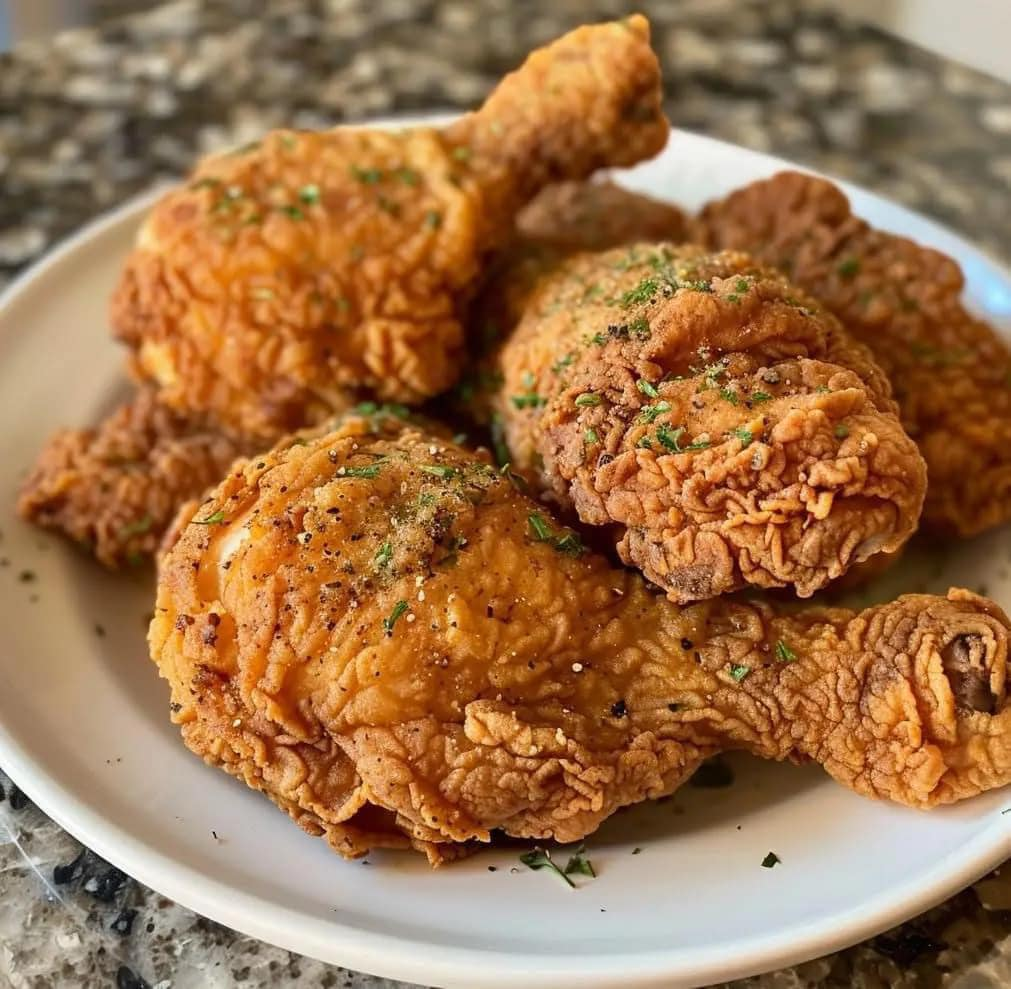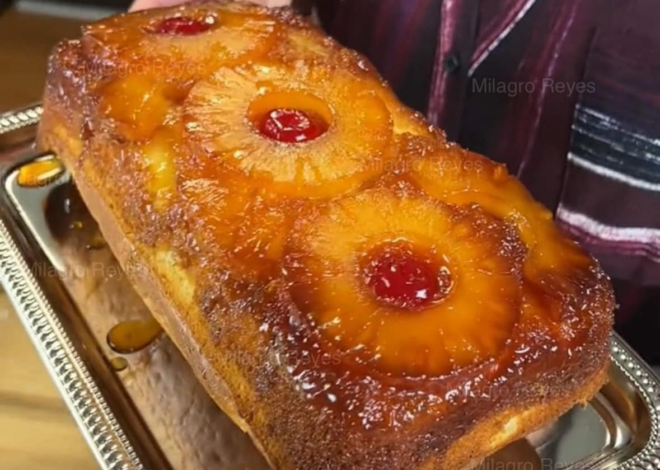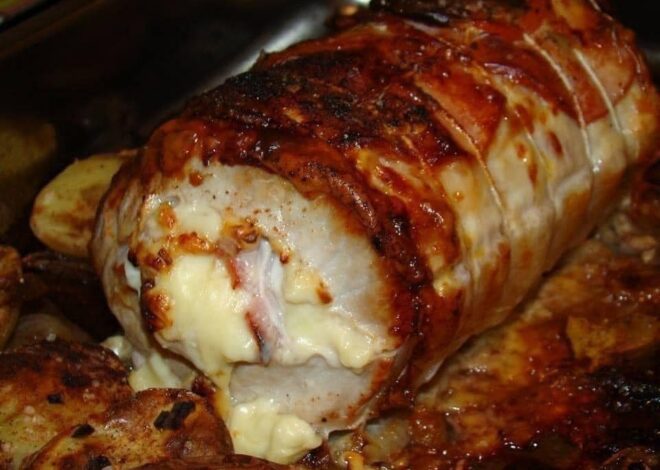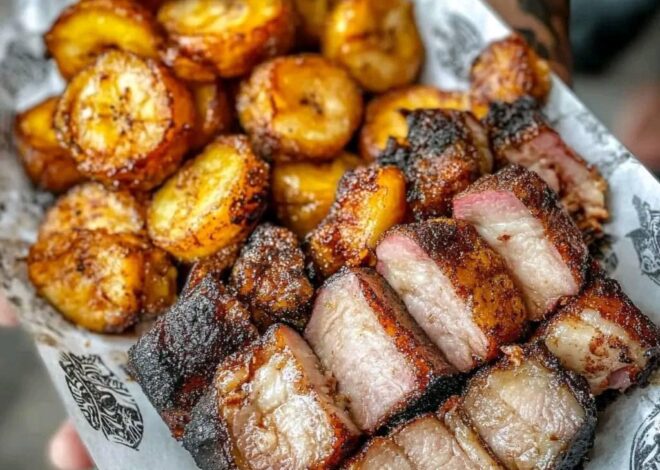
Muslos fritos en la air fryer
Ingredientes
4 muslos o muslos de pollo
1 taza de suero de leche
1 taza de harina para todo uso
1/2 taza de maicena
2 huevos batidos
1 taza de pan rallado o panko
1 cucharadita de sal
1 cucharadita de pimienta negra
1 cucharadita de pimentón
1/2 cucharadita de ajo en polvo
1/2 cucharadita de cebolla en polvo
aerosol para cocinar
Preparación
1. Marinar el pollo:
Comience con trozos de pollo limpios y secos. Séquelos con toallas de papel para asegurarse de que la capa se adhiera bien.
En un tazón grande, combine el suero de leche y 1 cucharadita de sal. Si lo desea, agregue unas gotas de salsa picante al suero de leche para darle un toque picante.
Sumerge los trozos de pollo en la mezcla de suero de leche. Asegúrese de que estén completamente recubiertos. Cubre el recipiente con film transparente y refrigera durante al menos 1 hora, pero preferiblemente durante la noche. Este paso es esencial ya que ablanda el pollo y le da sabor.
2. Prepare el revestimiento:
En otro tazón, combine la harina, la maicena y los condimentos (sal, pimienta negra, pimentón, ajo en polvo y cebolla en polvo). Mezclar bien.
En un recipiente aparte, bata los huevos hasta que estén bien combinados.
Coloca el pan rallado o panko en un tercer bol. Si usa queso parmesano o hierbas, mézclelos en esta etapa para darle más sabor.
3. Cubra el pollo:
Retire el pollo de la marinada de suero de leche. Deje escurrir el exceso.
Sumerja cada pieza en la mezcla de harina, asegurándose de que esté completamente cubierta. Sacuda el exceso.
Sumerja el pollo enharinado en los huevos batidos, dejando que escurra el exceso.
Por último, reboza el pollo con pan rallado o panko. Presione suavemente para asegurarse de que el recubrimiento se adhiera bien.
Coloque el pollo rebozado en un plato o rejilla para hornear. Déjelo reposar durante 10 a 15 minutos para permitir que la capa se asiente, lo que ayuda a lograr una corteza más crujiente.
4. Precaliente la freidora:
Configure su freidora a 375 °F (190 °C). El precalentamiento es fundamental para conseguir un exterior crujiente. La mayoría de las freidoras emitirán un pitido o mostrarán una luz cuando se precalientan, lo que suele tardar entre 3 y 5 minutos.
5. Organizar el pollo:
Coloque los trozos de pollo rebozados en la canasta de la freidora. Asegúrate de que estén en una sola capa y que no se toquen entre sí para permitir que el aire caliente circule libremente. Es posible que deba cocinar en lotes según el tamaño de su freidora.
6. Tiempo y temperatura de cocción:
Cocine el pollo durante 25-30 minutos. Voltee el pollo a la mitad de la cocción para asegurar que se dore uniformemente. Si usa pechugas de pollo deshuesadas o filetes, reduzca el tiempo de cocción a 15-20 minutos. Utilice un termómetro de cocina para comprobar la temperatura interna, que debe alcanzar los 74 °C (165 °F).
7. Rociar con aceite:
Rocíe ligeramente el pollo con aceite de cocina a mitad de la cocción. Esto ayuda a lograr una corteza dorada y crujiente. Tenga cuidado de no rociar demasiado, ya que demasiado aceite puede empapar el pollo.
8. Verifique que esté listo:
Use un termómetro para carnes para asegurarse de que el pollo esté completamente cocido. Insértalo en la parte más gruesa del pollo, evitando los huesos. Si la temperatura no ha alcanzado los 74 °C (165 °F), cocine por unos minutos más y verifique nuevamente.
Ingredients
4 chicken thighs or drumsticks
1 cup buttermilk
1 cup all-purpose flour
1/2 cup cornstarch
2 eggs, beaten
1 cup breadcrumbs or panko
1 teaspoon salt
1 teaspoon black pepper
1 teaspoon paprika
1/2 teaspoon garlic powder
1/2 teaspoon onion powder
Cooking spray
Preparation
1. Marinate the Chicken:
Start with clean, dry chicken pieces. Pat them dry with paper towels to ensure the coating sticks well.
In a large bowl, combine the buttermilk and 1 teaspoon of salt. If you like, add a few dashes of hot sauce to the buttermilk for a hint of heat.
Submerge the chicken pieces in the buttermilk mixture. Ensure they are fully coated. Cover the bowl with plastic wrap and refrigerate for at least 1 hour, but preferably overnight. This step is essential as it tenderizes the chicken and infuses it with flavor.
2. Prepare the Coating:
In another bowl, combine the flour, cornstarch, and seasonings (salt, black pepper, paprika, garlic powder, and onion powder). Mix well.
In a separate bowl, beat the eggs until well combined.
Place the breadcrumbs or panko in a third bowl. If you’re using Parmesan cheese or herbs, mix them in at this stage for additional flavor.
3. Coat the Chicken:
Remove the chicken from the buttermilk marinade. Let any excess drip off.
Dip each piece in the flour mixture, ensuring it’s fully coated. Shake off the excess.
Dip the flour-coated chicken into the beaten eggs, allowing any excess to drip off.
Finally, coat the chicken with the breadcrumbs or panko. Press gently to ensure the coating adheres well.
Place the coated chicken on a plate or baking rack. Let it sit for 10-15 minutes to allow the coating to set, which helps achieve a crispier crust.
4. Preheat the Air Fryer:
Set your air fryer to 375°F (190°C). Preheating is essential for achieving a crispy exterior. Most air fryers will beep or display a light when preheated, typically taking around 3-5 minutes.
5. Arrange the Chicken:
Place the coated chicken pieces in the air fryer basket. Make sure they’re in a single layer and not touching each other to allow hot air to circulate freely. You might need to cook in batches depending on the size of your air fryer.
6. Cooking Time and Temperature:
Cook the chicken for 25-30 minutes. Flip the chicken halfway through cooking to ensure even browning. If using boneless chicken breasts or tenders, reduce the cooking time to 15-20 minutes. Use a cooking thermometer to check the internal temperature, which should reach 165°F (74°C).
7. Spray with Oil:
Lightly spray the chicken with cooking oil halfway through cooking. This helps achieve a golden, crispy crust. Be careful not to overspray, as too much oil can make the chicken soggy
8. Check for Doneness:
Use a meat thermometer to ensure the chicken is fully cooked. Insert it into the thickest part of the chicken, avoiding bones. If the temperature hasn’t reached 165°F (74°C), cook for a few more minutes and check again.


